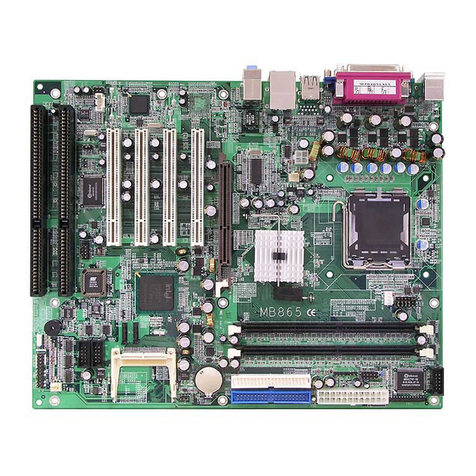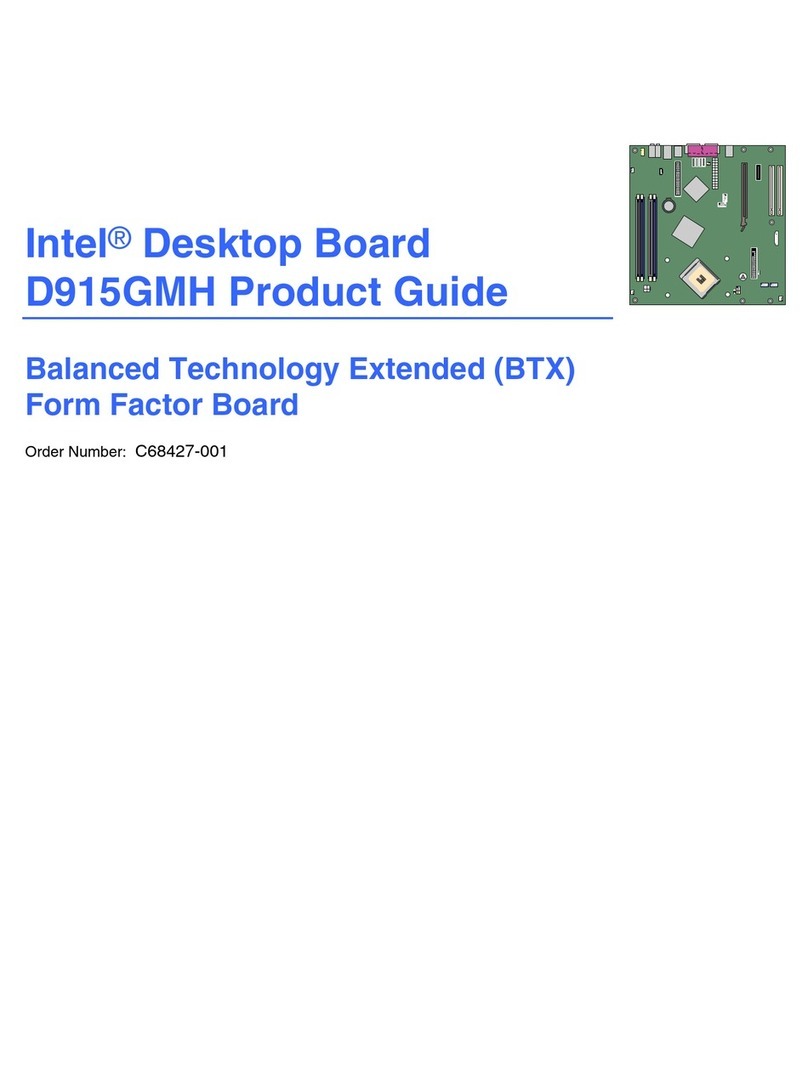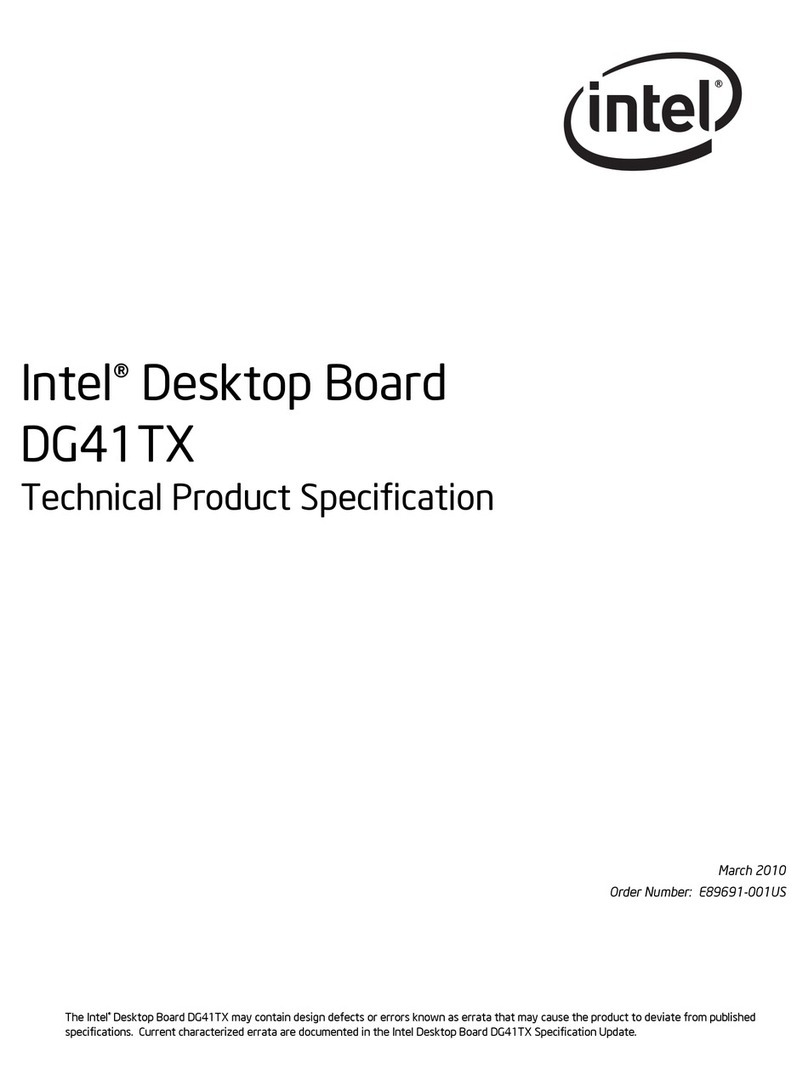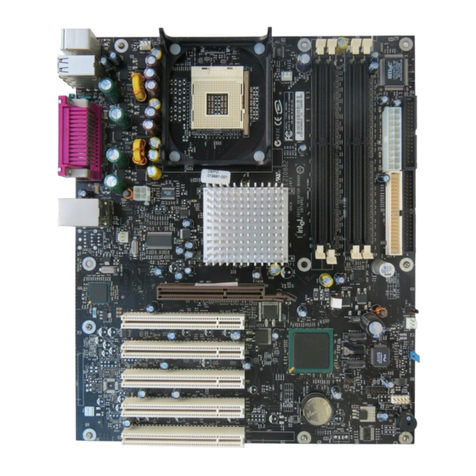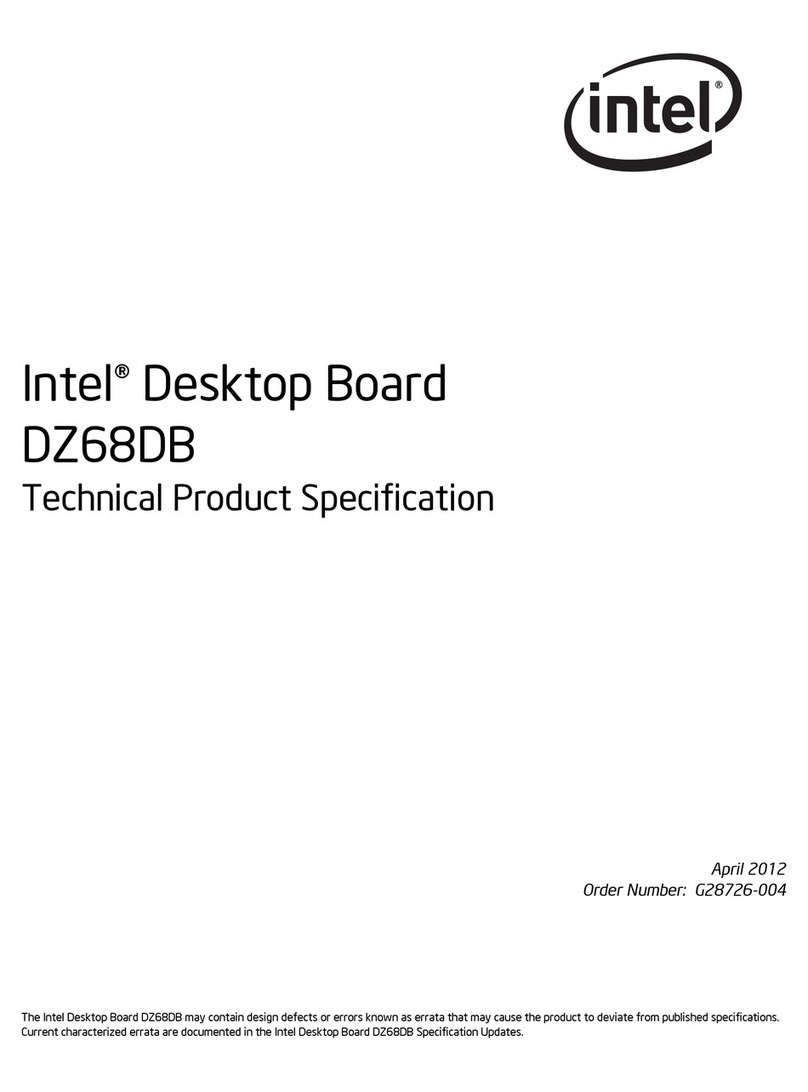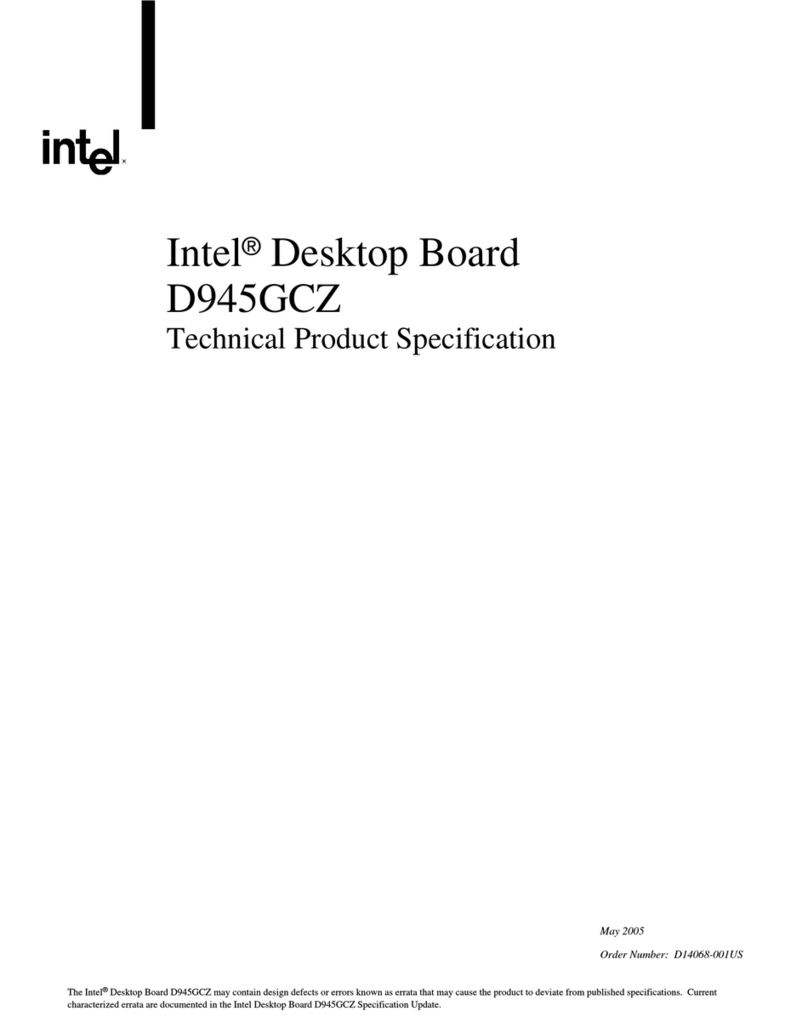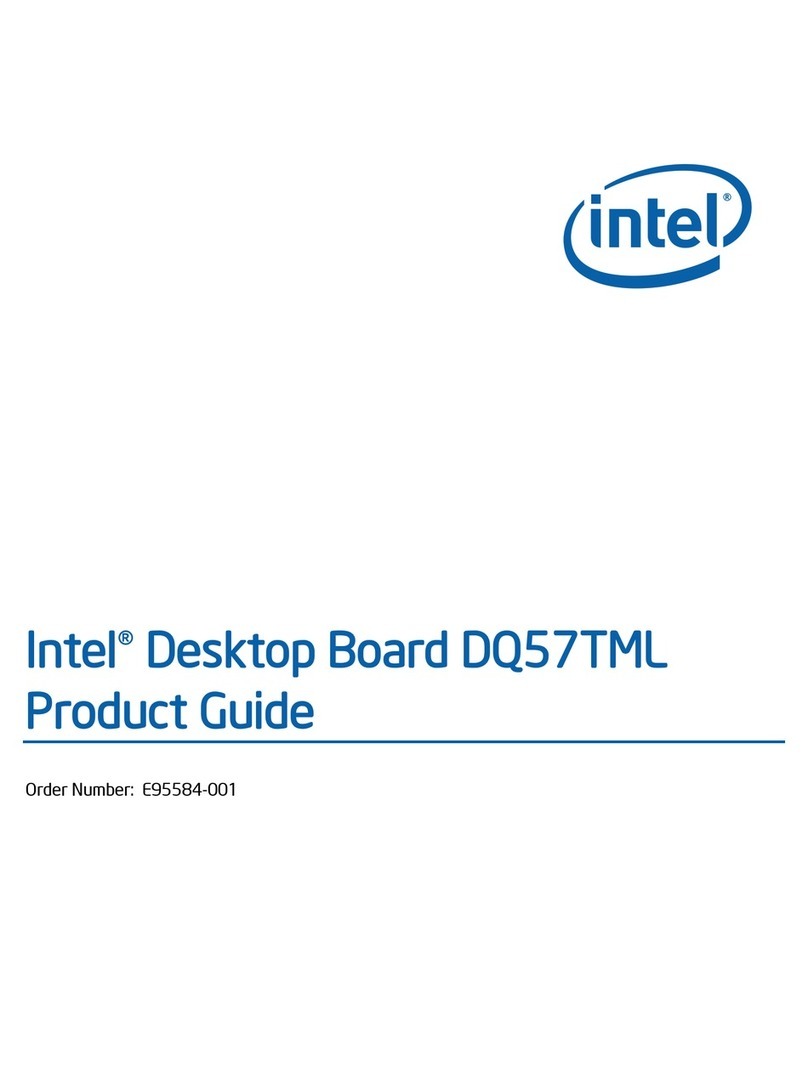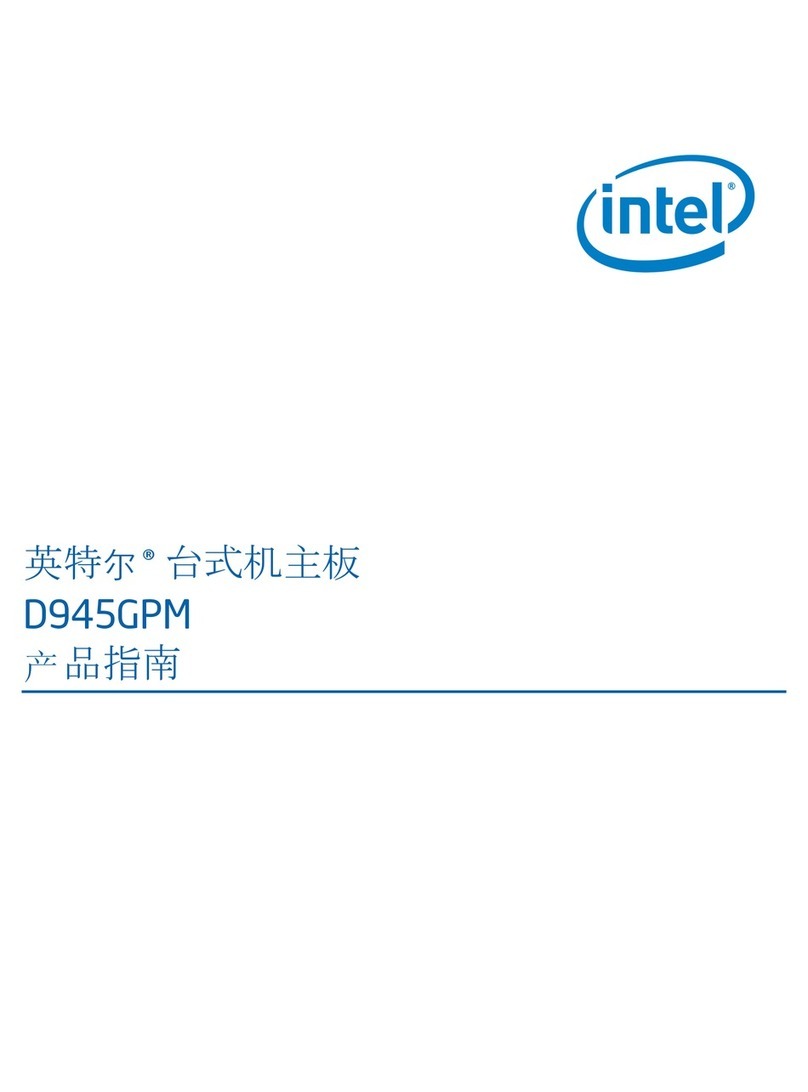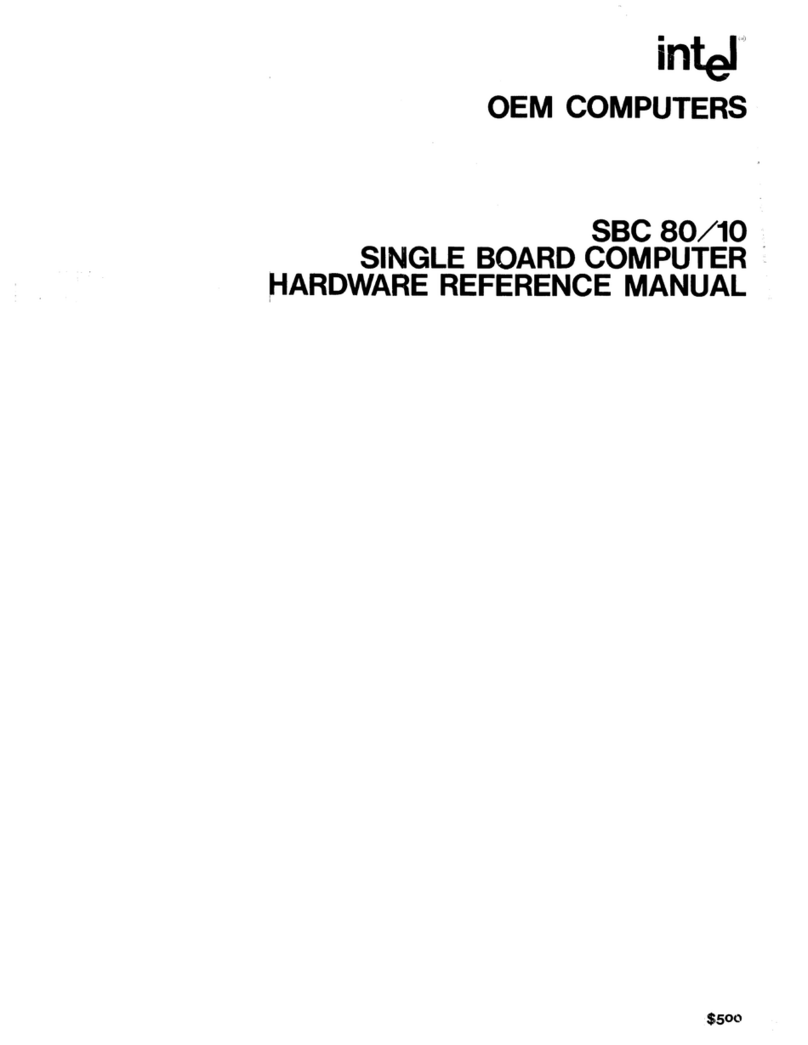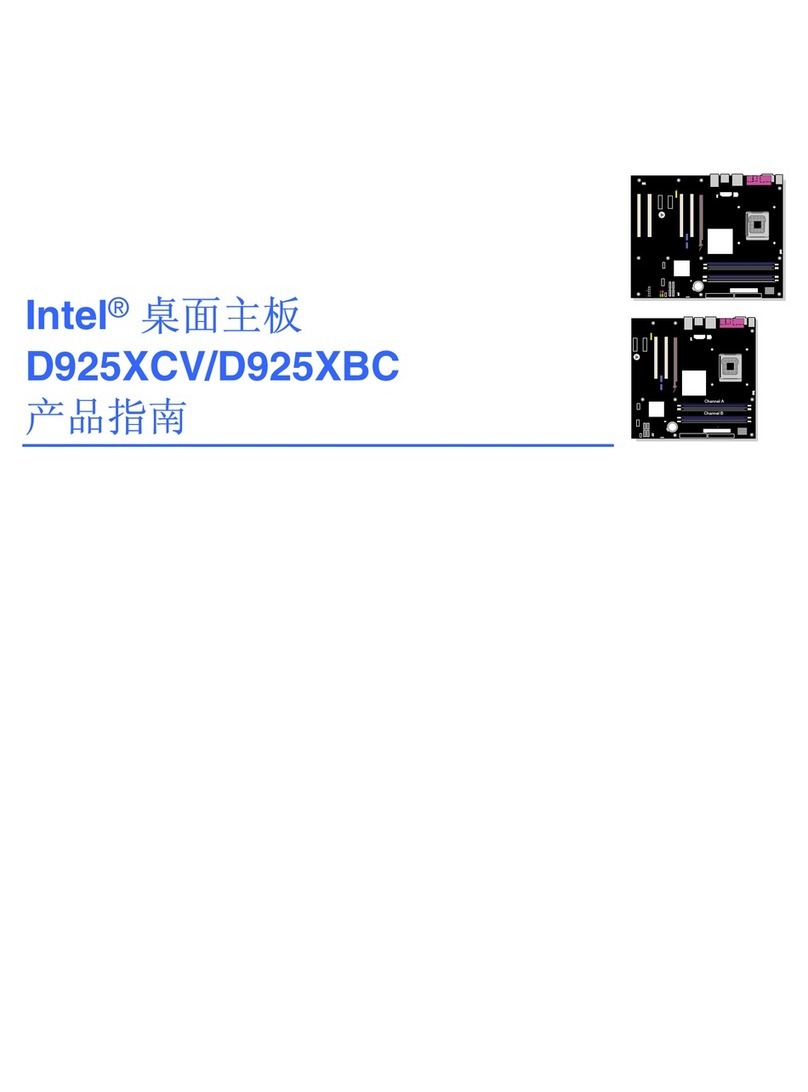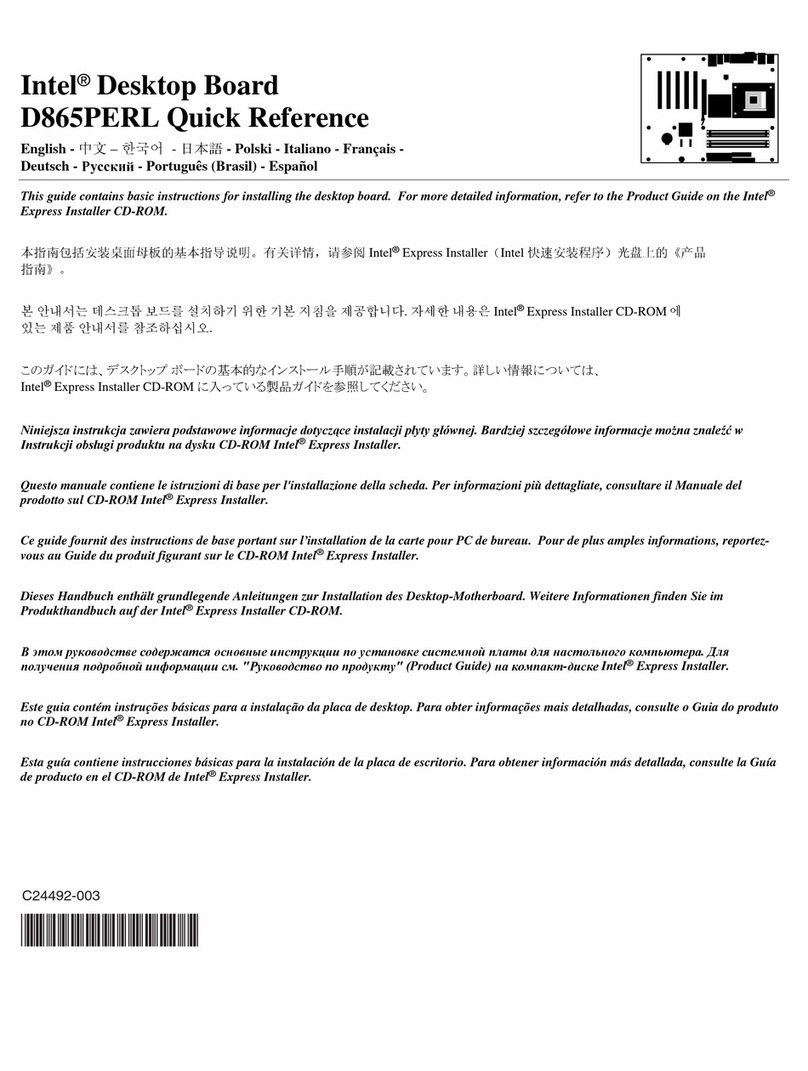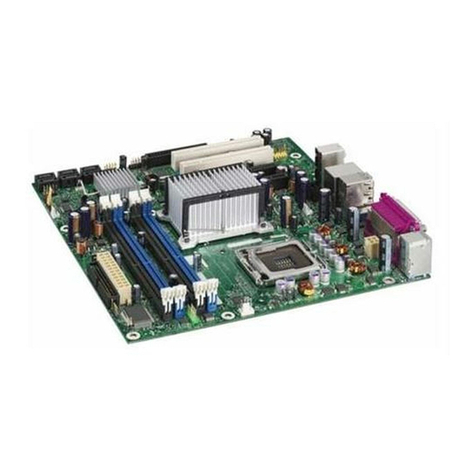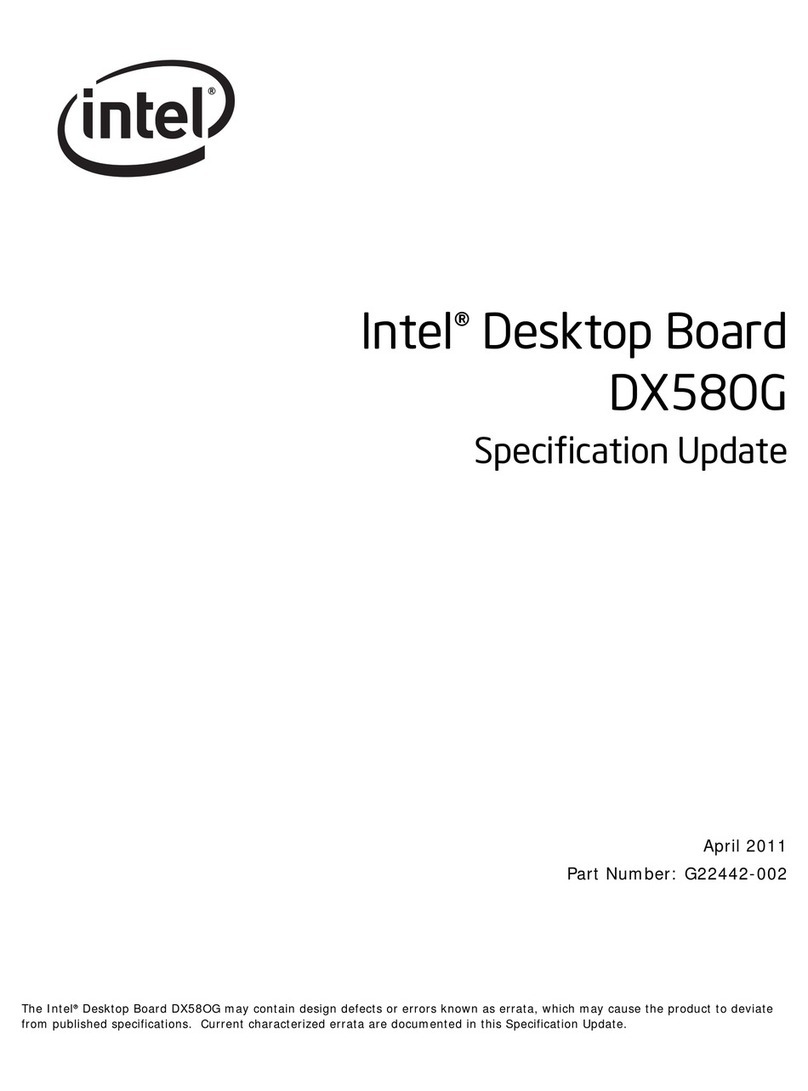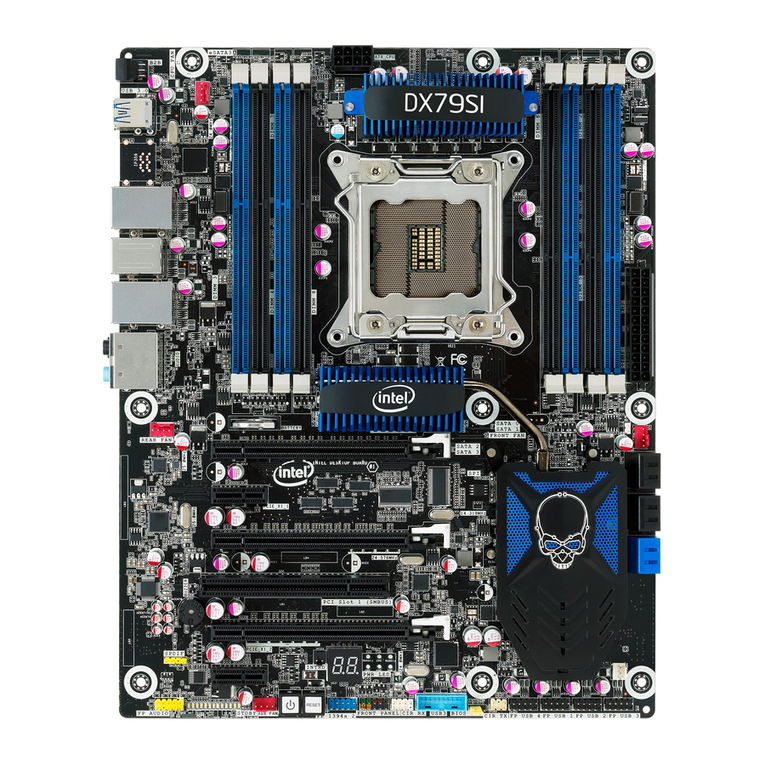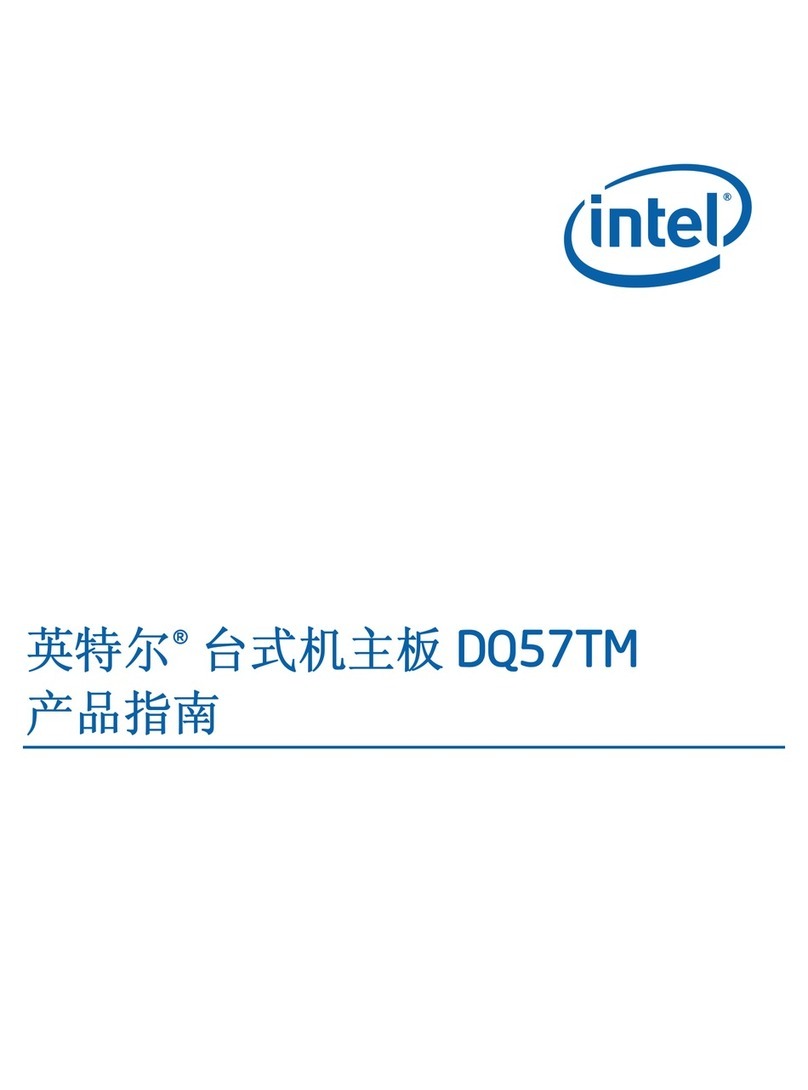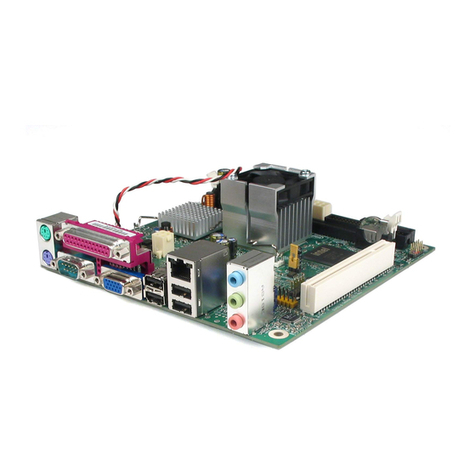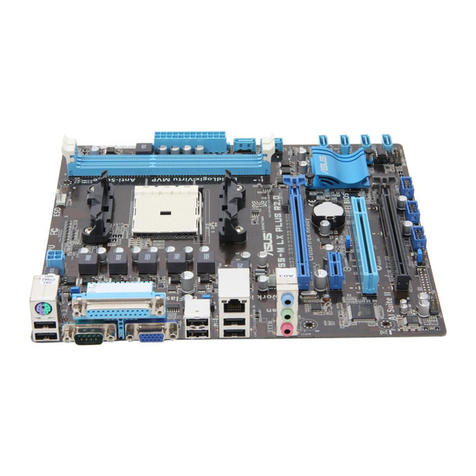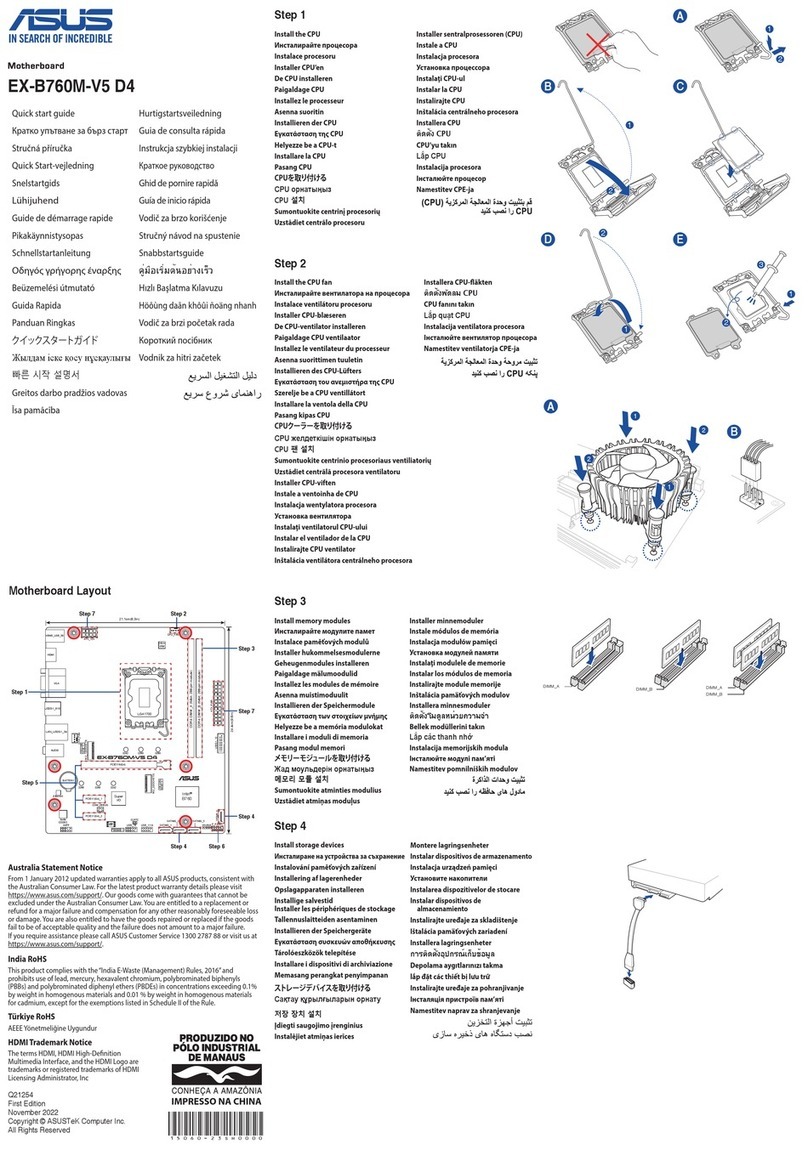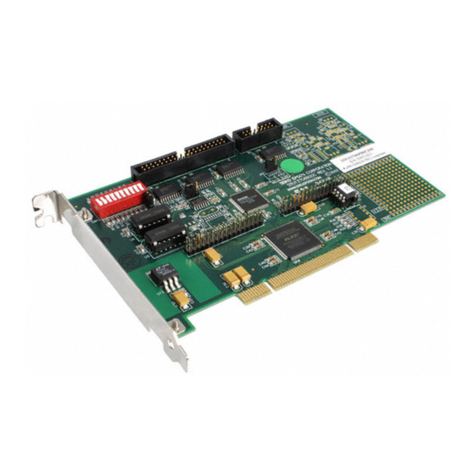
Intel Desktop Board DH57DD Product Guide
vi
2Installing and Replacing Desktop Board Components
Before You Begin ...............................................................................................27
Installation Precautions.......................................................................................28
Prevent Power Supply Overload ....................................................................28
Observe Safety and Regulatory Requirements.................................................28
Installing the I/O Shield ......................................................................................29
Installing and Removing the Desktop Board ...........................................................30
Installing and Removing a Processor.....................................................................31
Installing a Processor ..................................................................................31
Installing a Processor Fan Heat Sink..............................................................36
Connecting the Processor Fan Heat Sink Cable................................................36
Removing the Processor ..............................................................................36
Installing and Removing System Memory ..............................................................37
Guidelines for Dual Channel Memory Configuration..........................................37
Two or Four DIMMs .............................................................................37
Three DIMMs ......................................................................................38
Installing DIMMs ........................................................................................39
Removing DIMMs........................................................................................41
Installing and Removing PCI Express x16 Graphics Cards.........................................41
Installing a PCI Express x16 Graphics Card ....................................................41
Removing a PCI Express x16 Graphics Card....................................................43
Connecting SATA Cables .....................................................................................44
Connecting to the Internal Headers ......................................................................45
Front Panel Audio Header ............................................................................46
IEEE 1394a Headers ...................................................................................46
S/PDIF Header ...........................................................................................47
Serial Header.............................................................................................47
Consumer IR (CIR) Headers .........................................................................47
Intel®RPAT Header.....................................................................................48
Chassis Intrusion Header .............................................................................48
Alternate Front Panel Power LED Header ........................................................49
Front Panel Header .....................................................................................49
Front Panel USB 2.0 Headers........................................................................50
HD Audio Link Header .................................................................................50
Connecting to the Audio System...........................................................................51
Connecting Chassis Fan and Power Supply Cables...................................................52
Connecting a Chassis Fan ............................................................................52
Connecting Power Supply Cables ..................................................................53
Setting the BIOS Configuration Jumper .................................................................54
Clearing Passwords ............................................................................................55
Replacing the Battery .........................................................................................56
3Updating the BIOS
Updating the BIOS with the Intel®Express BIOS Update Utility.................................63
Updating the BIOS with the ISO Image BIOS Update File or the Intel®Flash
Memory Update Utility...................................................................................64
Obtaining the BIOS Update File ....................................................................64
Updating the BIOS with the ISO Image BIOS Update File .................................64
Updating the BIOS with the Intel Flash Memory Update Utility...........................65
Recovering the BIOS...................................................................................66
